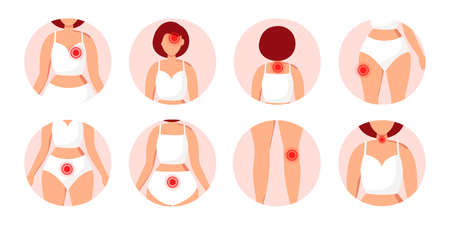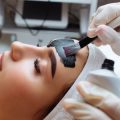Introduction: The Shifting Landscape of UK Aesthetics
Walking through the stylish streets of London or browsing the latest beauty trends in Manchester, it’s impossible not to notice a subtle yet significant transformation unfolding across the UK’s aesthetic scene. Over the past few years, there has been a clear and undeniable shift in how Brits approach personal enhancement. Where once surgical procedures like facelifts and rhinoplasty dominated conversations around beauty, today there is a growing preference for less invasive, non-surgical alternatives. This evolution isn’t just about convenience—it reflects a deeper change in attitudes towards self-expression, wellness, and authenticity. More people are now seeking treatments that fit seamlessly into their busy lives, offering natural-looking results without lengthy recovery times. As British sensibilities move away from drastic transformations and towards subtle refinements, non-surgical treatments—think injectables, skin boosters, and advanced skincare technologies—are fast becoming the new standard in aesthetic care. This movement isn’t merely a fleeting trend; it’s reshaping the very ethos of what it means to look and feel your best in modern Britain.
2. Cultural Influences on Beauty Standards in the UK
When exploring the aesthetic trends shaping the UK, its impossible to ignore the profound impact of British cultural sensibilities on beauty ideals. Theres a distinct preference here for subtlety, understatement, and what many would describe as a natural look. These values run deep—woven through everything from fashion to social etiquette—and they are now significantly influencing the popularity of non-surgical aesthetic treatments.
The Subtle Art of Enhancement
Unlike some cultures that embrace bold transformations, British beauty standards often lean towards enhancements that are quietly effective. The idea is not to look dramatically altered but rather refreshed, well-rested, and naturally radiant. This understated approach has made non-invasive treatments such as dermal fillers, skin boosters, and gentle lasers especially appealing. People want to look their best without broadcasting that theyve had work done—it’s all about achieving a version of yourself that feels authentic.
Comparing Attitudes: Traditional vs. Modern Aesthetics
| Traditional (Surgical) Procedures | Non-Surgical Treatments |
|---|---|
| Often associated with dramatic results and longer recovery times | Subtle improvements with minimal downtime |
| Perceived as more obvious or noticeable changes | Favoured for their ‘barely there’ effect and discretion |
| Historically linked to celebrity culture or significant life events | Mainstream acceptance for everyday enhancement |
A Reflection of British Values
This preference for subtle beauty aligns perfectly with the classic British tendency to avoid ostentation. In my own experience and conversations with friends across London and beyond, there’s an unspoken consensus: less is more, and authenticity reigns supreme. Non-surgical treatments allow individuals to embrace these values while still enjoying the confidence boost that comes from looking their best. The shift isnt just about aesthetics—its about feeling comfortable in your own skin while staying true to personal and cultural ideals.

3. Non-Surgical Treatments: What’s On Trend?
When it comes to aesthetic enhancements in the UK, non-surgical treatments are truly having a moment. The days when “going under the knife” was the only route to a fresher look are long gone—today, people are embracing innovative solutions that deliver noticeable results without the downtime or commitment of surgery. So, what are the most sought-after non-surgical options making waves from London to Manchester?
Injectables: Subtle Yet Effective
Injectables such as anti-wrinkle injections and dermal fillers top the list for many Brits looking to smooth lines or restore lost volume. There’s a distinct preference here for treatments that enhance rather than drastically alter—think softly defined lips or a gently lifted brow. With skilled practitioners and a growing cultural focus on “tweakments,” injectables have become almost as common as getting a haircut.
Skin Boosters: The Dewy Skin Craze
Skin boosters like Profhilo and hydrating microinjections have exploded in popularity, especially among those chasing that enviable British “glow.” Unlike traditional fillers, these treatments work by improving skin quality from within, promoting hydration and elasticity. For anyone hoping to look effortlessly fresh-faced through unpredictable UK weather, skin boosters provide a subtle yet transformative touch.
Advanced Facials: Tech-Driven Pampering
The modern facial has been reimagined with high-tech offerings such as radiofrequency lifting, microneedling, and LED therapy. These treatments appeal to those who want tangible improvements—firmer skin, refined pores, reduced pigmentation—without needles or recovery time. They also slot seamlessly into busy lifestyles and often feel more like self-care rituals than medical procedures.
The Allure of Non-Surgical Choices
What truly sets non-surgical treatments apart is their flexibility and customisation. With minimal downtime, less risk, and increasingly natural-looking results, it’s no wonder so many in the UK are swapping surgical alternatives for these innovative options. Whether you’re after a quick lunchtime refresh or an ongoing regime to maintain your glow, there’s never been a better time to explore what non-surgical aesthetics can offer.
4. Technology, Accessibility, and Attitudes
When you walk down the high streets of London or Manchester today, it’s hard to miss the growing number of clinics offering advanced non-surgical aesthetic treatments. This shift isn’t simply about vanity; it’s deeply rooted in the rapid technological evolution within the beauty sector, greater accessibility for everyday Brits, and a remarkable change in public attitudes towards cosmetic enhancements.
Technological Advances Shaping Non-Surgical Treatments
Over the past decade, innovation has dramatically improved the safety and effectiveness of non-surgical procedures. New-generation dermal fillers, laser devices, and skin tightening technologies now offer refined results with minimal downtime—something that was hardly imaginable with traditional surgical options. For example, the use of micro-focused ultrasound and radiofrequency tools allows practitioners to sculpt and rejuvenate without a scalpel. These advancements make it possible to achieve a natural look—a top priority for many Brits who value subtlety over dramatic transformation.
Accessibility: Bringing Aesthetics to Your Doorstep
The days when cosmetic procedures were exclusive to celebrities or those travelling abroad are long gone. Today, clinics offering non-surgical treatments can be found across the UK—from bustling city centres to smaller market towns. Increased competition has not only driven prices down but also ensured higher standards of care due to regulatory improvements. Many clinics offer walk-in consultations and same-day appointments, making these services as routine as popping in for a haircut or manicure.
Comparison: Traditional vs Non-Surgical Treatments
| Treatment Type | Downtime | Accessibility | Typical Cost | Popularity among Brits |
|---|---|---|---|---|
| Surgical (e.g., facelift) | 2-4 weeks | Specialist hospitals/clinics only | £5,000+ | Declining |
| Non-Surgical (e.g., fillers, lasers) | A few hours to 1 day | High street clinics nationwide | £200-£800 per session | Rising rapidly |
The British Attitude: Embracing Subtle Enhancements
The UK’s relationship with aesthetics is nuanced and pragmatic. There’s a strong cultural preference for looking ‘well-rested’ or ‘fresh-faced’ rather than overtly altered. As non-surgical treatments become mainstream, the stigma that once surrounded cosmetic enhancements is fading. Many Brits now see these procedures as part of regular self-care rather than an act of vanity. Social media influencers and celebrities discussing their own experiences openly have played a big role in this shift, making aesthetic treatments more relatable and less taboo.
The Takeaway: Why This Matters Now
The convergence of cutting-edge technology, easy access to skilled practitioners, and evolving social acceptance is fuelling a new era in UK aesthetics—one where enhancement feels both attainable and authentic. It’s no wonder non-surgical options are quickly outpacing their traditional counterparts on every front.
5. Why Are Brits Choosing Non-Surgical Over Traditional Procedures?
There’s a quiet but powerful shift underway in the UK’s approach to beauty and self-care—a movement that’s seeing more of us favouring non-surgical treatments over traditional cosmetic procedures. If you wander through London’s stylish clinics or chat with friends about their latest beauty finds, it becomes clear that these choices are motivated by both practical and emotional considerations.
Minimal Downtime: Fitting Beauty Into Busy British Life
One of the most compelling reasons for this trend is the appeal of minimal downtime. Life in the UK moves at a brisk pace; whether you’re racing for the Tube, juggling family, or working long hours, taking weeks off to recover from surgery simply isn’t realistic for most. Non-surgical options—think fillers, Botox, or skin boosters—offer subtle enhancements that can often be done on a lunch break, letting you return to your daily routine almost immediately. This convenience fits seamlessly with our love for efficiency and our ever-busy diaries.
Affordability: Accessible Enhancements for All
Let’s face it—cost matters. Traditional surgical procedures can be prohibitively expensive, making them unattainable for many Brits who still want to feel confident and refreshed. Non-surgical treatments have democratised aesthetic care; they’re generally more affordable, allowing people from all walks of life to invest in themselves without breaking the bank. The rise of flexible payment plans and introductory offers at clinics across the UK has only fuelled this accessibility.
Lower Risks: A Safer Bet for Subtle Change
Safety is another significant driver behind this aesthetic evolution. Non-surgical treatments carry fewer risks compared to going under the knife—no general anaesthetic, no invasive incisions, and far fewer complications. For those of us who value peace of mind as much as a refreshed look, these treatments offer a reassuring alternative. It’s about enhancing what we already love about ourselves while minimising anxiety about potential side effects or long recovery periods.
The Emotional Motivation: Confidence Without Commitment
Beneath all these practicalities lies something deeply emotional—the desire for confidence without the need for dramatic change or lifelong commitment. There’s a distinctly British appreciation for subtlety; we tend to prefer enhancements that are natural-looking and understated. Non-surgical treatments let us experiment, tweak, and refine our appearance gradually, supporting an authentic sense of self rather than striving for perfection. In a culture where modesty is often valued over ostentation, these gentle tweaks resonate profoundly.
Ultimately, the popularity of non-surgical aesthetics in the UK comes down to their ability to fit effortlessly into our lives—offering convenience, safety, affordability, and above all, a gentle boost to our everyday confidence.
6. Future Outlook: What’s Next for UK Aesthetics?
Looking ahead, the UK’s aesthetic scene is set to evolve in exciting and unexpected ways. As someone who’s watched trends come and go across London and beyond, it’s clear that innovation will remain at the heart of the movement. We’re already seeing advanced non-surgical technologies, from next-generation skin rejuvenation devices to AI-driven consultations, making treatments even more accessible and tailored. Inclusivity is also coming to the fore; British clinics are increasingly mindful of representing all skin tones, ages, genders, and body types—shifting away from a one-size-fits-all model towards celebrating individuality.
Self-care is another trend that’s here to stay. The UK has embraced wellness as part of beauty, with non-surgical treatments woven into daily routines rather than reserved for special occasions. It’s no longer just about erasing lines or sculpting cheekbones—it’s about feeling good in your own skin. With social attitudes changing, people are more open about their aesthetic choices, which encourages honest conversations between clients and practitioners.
In the near future, we can expect a wave of eco-conscious innovations too. Sustainability is becoming a major talking point within British aesthetics: think biodegradable packaging, cruelty-free ingredients, and energy-efficient clinic spaces. This aligns perfectly with the UK’s growing environmental awareness and desire to make ethical lifestyle choices.
Ultimately, the aesthetic trends sweeping the UK are about more than quick fixes or fleeting fashion—they reflect a cultural shift towards self-expression, holistic wellbeing, and community. As technology advances and societal values progress, it will be fascinating to see how these elements blend to shape the next chapter of British beauty culture.


